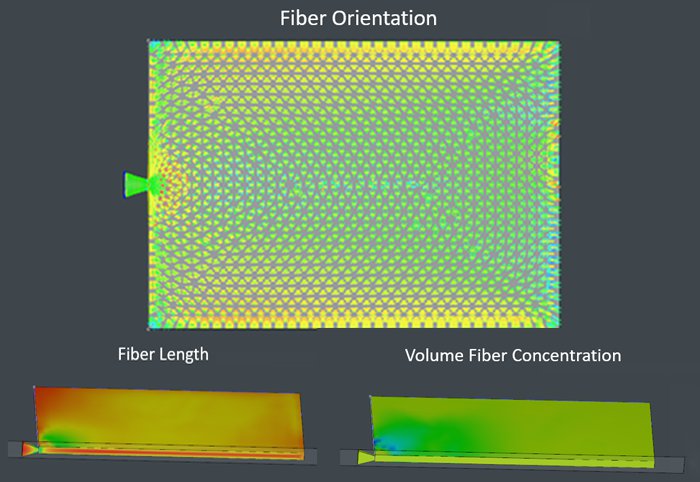
The Importance of simulations of fiber filled materials
ESPECIALLY FOR OUR USERS
Injection molding is a widely used manufacturing process for producing complex and precise plastic parts. To ensure the quality and performance of these parts, engineers and manufacturers rely on injection molding simulations. These simulations help optimize various parameters like material selection, mold design, and processing conditions. One area of growing importance in injection molding simulations is the use of fiber-filled materials. These materials are infused with reinforcing fibers, such as glass or carbon, and can significantly impact the mechanical properties and performance of molded parts. In this article, we'll explore the benefits and challenges of using fiber-filled materials in injection molding simulations.
Fiber-filled materials, also known as composite materials, consist of a polymer matrix combined with reinforcing fibers. These fibers are typically made of glass, carbon, or aramid, and they are added to the polymer matrix to enhance the material's mechanical properties. The key benefits of using fiber-filled materials in injection molding include:
_ The addition of fibers improves the tensile strength and stiffness of the material.
_ Fiber-filled materials can provide the same or even greater strength than traditional materials while reducing overall part weight. This is essential in industries like automotive and aerospace, where weight savings translate to improved fuel efficiency and reduced environmental impact.
_ Many fiber-filled materials exhibit superior thermal stability compared to unfilled polymers. This makes them suitable for applications exposed to high temperatures, such as under-the-hood automotive components.
_ The reinforcing fibers help reduce dimensional changes due to temperature variations, making fiber-filled materials ideal for precision engineering applications.
Despite their many advantages, the use of fiber-filled materials in injection molding simulations presents certain unique challenges, including:
_ Anisotropic Behavior: Fiber-filled materials are intrinsically anisotropic, meaning their mechanical properties vary along different axes.
_ Fiber Orientation: During the injection molding process, fibers tend to align in the direction of flow.
_ Viscosity and Flow Behavior: The presence of fibers can significantly affect the material's viscosity and flow behavior. Accurately modeling these properties is vital for predicting fill patterns, pressure distributions, and warpage.
_ Fiber Concentration: Variations in fiber concentration can influence mechanical properties, and accurately representing these variations is essential for realistic simulations.
_ Fiber Breakage: The dynamic nature of the injection molding process can lead to fiber breakage.
Simulating and comprehending these behaviors is crucial for accurate predictions of part performance.
Moldex3D uses advanced simulation tools and techniques to successfully incorporate fiber-filled materials into injection molding simulations, including: fiber orientation analysis, fiber length breakage, and fiber concentration.
Please contact us: 0241 565 276-0 or send an email to sales@simpatec.com.
